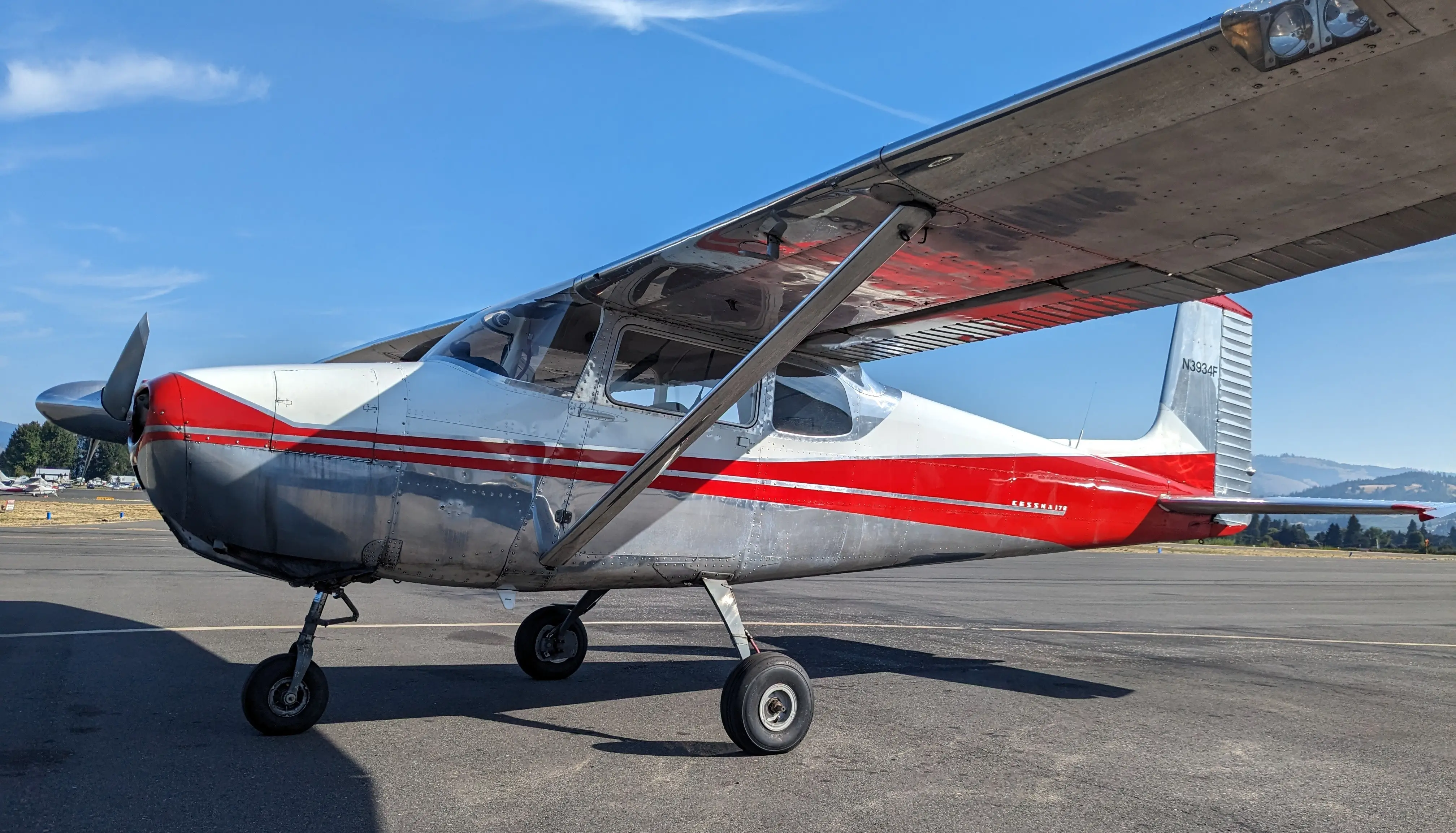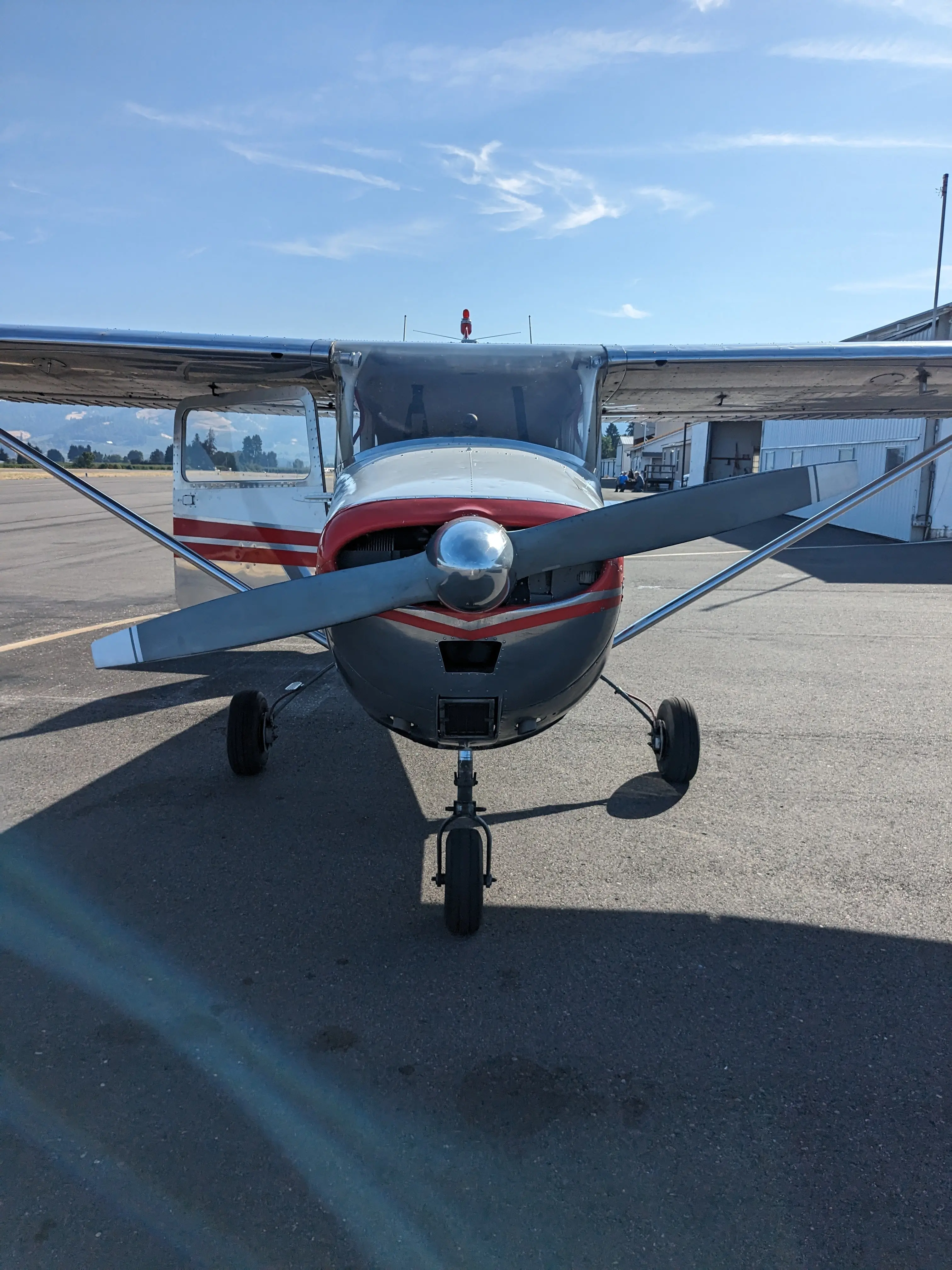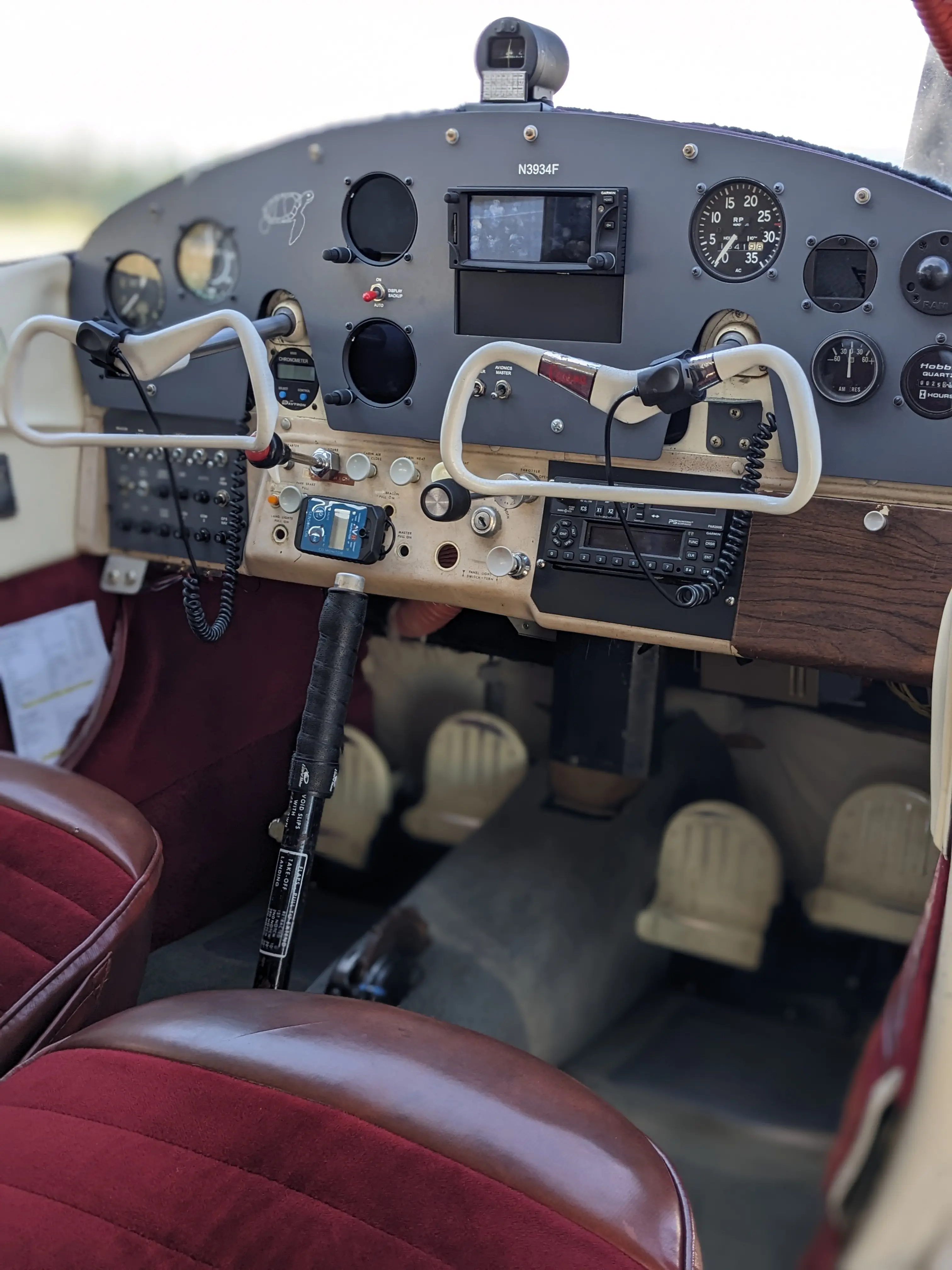"the world's easiest to fly airplane... the Cessna 172!"
Flight instruction is offered in Great Wave Aviation's immaculately maintained 1958 Cessna 172, N3934F. One of the first Skyhawks, N3934F is an ideal training aircraft.
- Powered by the 145 HP Continental O300 - A reliable and easy-to-operate power plant, the O300 is more forgiving of mistakes than a more powerful engine.
- Johnson Bar flap control - Allows the student to feel the aerodynamic impact of flaps.
- Land-O-Matic landing gear - Perhaps the easiest-to-land plane ever manufactured.
- New panel as of 2023 - Modern avionics and instrumentation prepares students for the future.
- Comfortable interior - Along with the whisper-quiet audio system, the greater comfort reduces fatigue.
- Fantastic handling - This plane is just extremely fun to fly!
Instruction can also be provided in student-owned aircraft, including Complex, High Performance, and Tailwheel planes.
The panel for N3934F was designed with students in mind, providing a modern
"glass panel" experience, but also allowing flight using the "steam gages" alone. The low glareshield and large windshield allow students of all heights to have a good sight picture out the front of the aircraft, and the spacious interior in luxurious burgundy, gray, and cream make being in the plane relaxing and fun. All aircraft upgrades have been made with the intent of reducing pilot workload and increasing safety.

The panel is anchored by dual GI 275s (A), which are primary for all six traditional steam gage instruments. These have battery backups, but in the event of failure, a steam gage Air Speed Indicator (B) and Altimeter (C) are available to make the aircraft legal to fly. Below the Altimeter lies the control for the 406/GPS Emergency Locator Transmitter (D). And directly under the pilot yoke is the Clock (E).
The GTN650 GPS/NAV/COM (F) sits top center, providing COM channel 1, remote Transponder control, and numerous navigation features. Below the GTN650 you can find the Battery and Avionics Master Switches (G) and a handy USB charger (H).
On the right side of the panel is the Tachometer (I), a combined digital Voltmeter/Oil Pressure/Oil Temperature Gage (J), and an Ammeter (K). Furthest right is the Hobbs Meter (L), useful for tracking your flight hours, and a RAM Mount (M) for positioning a tablet (for digital charts).
Casting his imperious eye over the rest of the panel, the Magnetic Compass (N) is bolted to the glareshield. And below the main panel, from left to right, you can find the bank of Switches and Circuit Breakers (O), the Carbon Monoxide Detector (P), various Engine and Cabin Controls (Q), and the PAR200B (R) - which functions as both the master audio control and provides COM channel 2. Below the PAR200B is the GTX345 (S), an ADSB Transponder that provides ADSB "in" and "out", allowing the pilot to receive live traffic information about other ADSB-equipped aircraft.




